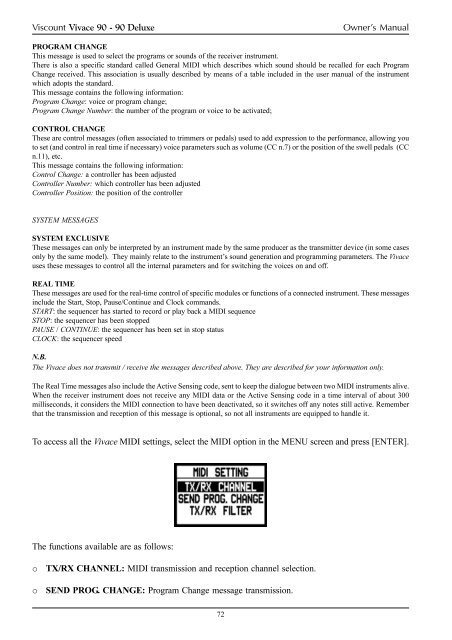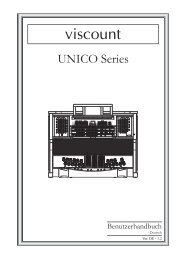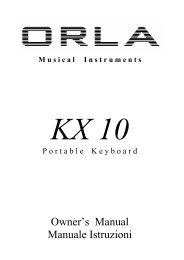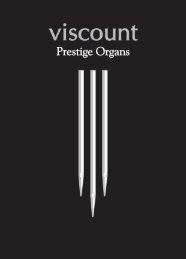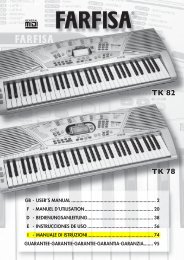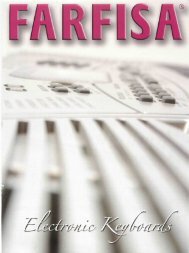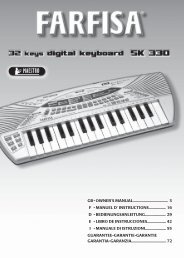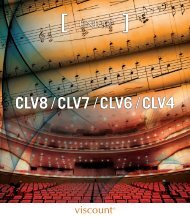Create successful ePaper yourself
Turn your PDF publications into a flip-book with our unique Google optimized e-Paper software.
<strong>Viscount</strong> Vivace 90 - 90 Deluxe<br />
Owner’s Manual<br />
PROGRAM CHANGE<br />
This message is used to select the programs or sounds of the receiver instrument.<br />
There is also a specific standard called General MIDI which describes which sound should be recalled for each Program<br />
Change received. This association is usually described by means of a table included in the user manual of the instrument<br />
which adopts the standard.<br />
This message contains the following information:<br />
Program Change: voice or program change;<br />
Program Change Number: the number of the program or voice to be activated;<br />
CONTROL CHANGE<br />
These are control messages (often associated to trimmers or pedals) used to add expression to the performance, allowing you<br />
to set (and control in real time if necessary) voice parameters such as volume (CC n.7) or the position of the swell pedals (CC<br />
n.11), etc.<br />
This message contains the following information:<br />
Control Change: a controller has been adjusted<br />
Controller Number: which controller has been adjusted<br />
Controller Position: the position of the controller<br />
SYSTEM MESSAGES<br />
SYSTEM EXCLUSIVE<br />
These messages can only be interpreted by an instrument made by the same producer as the transmitter device (in some cases<br />
only by the same model). They mainly relate to the instrument’s sound generation and programming parameters. The Vivace<br />
uses these messages to control all the internal parameters and for switching the voices on and off.<br />
REAL TIME<br />
These messages are used for the real-time control of specific modules or functions of a connected instrument. These messages<br />
include the Start, Stop, Pause/Continue and Clock commands.<br />
START: the sequencer has started to record or play back a MIDI sequence<br />
STOP: the sequencer has been stopped<br />
PAUSE / CONTINUE: the sequencer has been set in stop status<br />
CLOCK: the sequencer speed<br />
N.B.<br />
The Vivace does not transmit / receive the messages described above. They are described for your information only.<br />
The Real Time messages also include the Active Sensing code, sent to keep the dialogue between two MIDI instruments alive.<br />
When the receiver instrument does not receive any MIDI data or the Active Sensing code in a time interval of about 300<br />
milliseconds, it considers the MIDI connection to have been deactivated, so it switches off any notes still active. Remember<br />
that the transmission and reception of this message is optional, so not all instruments are equipped to handle it.<br />
To access all the Vivace MIDI settings, select the MIDI option in the MENU screen and press [ENTER].<br />
The functions available are as follows:<br />
o<br />
o<br />
TX/RX CHANNEL: MIDI transmission and reception channel selection.<br />
SEND PROG. CHANGE: Program Change message transmission.<br />
72


